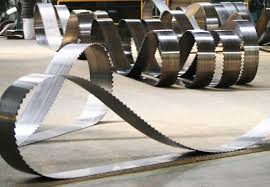Business
How to Design an Employee Rewards Program that Works
As a manager or business owner, you know that your employees are the backbone of your organization’s success. Employee motivation and engagement are vital in driving productivity, enhancing work quality, and increasing job satisfaction. However, maintaining high levels of motivation and engagement can be challenging, particularly in today’s fast-paced work environment. That’s where an effective employee rewards program comes into play. Designing a rewards program that aligns with your business goals and employee needs can create a workplace culture that fosters creativity, productivity, and job satisfaction.
This post will explore the key elements of designing an employee rewards program that works, and how you can implement it to drive employee motivation and engagement. Whether a small business owner or a large corporation, implementing an effective rewards program can make all the difference in your employees’ performance and job satisfaction.
Identify Your Objectives
Establishing your goals is crucial before creating your incentive program. What do you want your program to accomplish? Do you want to raise morale, increase retention rates, or increase productivity? Establishing your objectives will enable you to create a program that supports your goals. For example, including a visa prepaid card as a part of a reward or incentive program for employees could increase their productivity levels as many people would likely work toward the opportunity for what is essentially a bonus on top of their income.
Consider Your Budget
You must take your budget into account when creating your rewards program. What financial resources are available for rewards? Before starting your program, it’s critical to have a firm grasp of your budget because it will affect the incentives you may provide.
Monitor and Evaluate Your Program
It’s critical to track and assess your incentive program’s success. Get input from your staff regarding the aspects of the program they enjoy and dislike and use this information to make adjustments. Check your metrics often to see if your program is accomplishing its goals and adjust as necessary. All results should be recorded within your employee benefits software platform.
Choose the Right Rewards
For an employee incentives program to be effective, selecting the appropriate rewards is crucial. Money rewards are frequently effective, but there are other choices. For example, consider providing non-cash incentives like additional vacation time, flexible work schedules, or acknowledgment for a well-done job.
Thinking about the prizes that will inspire your staff the most is crucial. While other workers would desire private appreciation, some workers might be motivated by public recognition. To determine what awards your team values the most, consider organizing a survey or focus group.
Define Your Metrics
It’s crucial to specify your KPIs for your rewards program. What metrics will you use for the program’s success? For example, will you monitor staff output, retention rates, and general job satisfaction? You may assess your rewards program’s success by defining your metrics.
Communicate Your Program
It’s crucial to inform your staff of your rewards program after its creation. Make sure they are aware of the benefits that are offered and how to obtain them. In addition, make sure staff members are aware of the expectations and provide clear guidelines and instructions on how to be eligible for awards.
An excellent employee rewards program requires considerable thought and preparation to create. However, you can design an efficient and inspiring program for your staff by deciding on your objectives, considering your budget, selecting the appropriate rewards, establishing your KPIs, communicating your schedule, and monitoring and assessing it. Increased engagement, productivity, and retention rates can result from a well-designed rewards program, which will ultimately help your company succeed.
Related Posts












